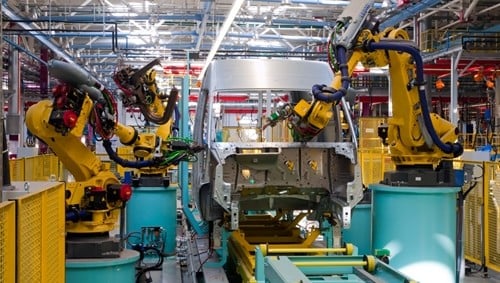When running an offshoring company in Mexico, one of the major problems is logistics. The issue is not so much moving goods within Mexico itself or in the United States, but rather crossing the border. Along with waits taking up to an hour in some places, companies looking to bring goods into the U.S. have had to transfer their goods from Mexican trucks to American vehicles, which take an additional amount of time and money. While improvements have been made, the crossing remains a major bottleneck for manufacturing in Mexico, which is why reforms continue to be necessary for transportation on both sides of the border.
We don't need no stinkin' licenses
Even after the signing of the North American Free Trade Agreement in 1993, one of the major sticking points for commercial transportation was the matter of trucking into the United States. Federal law had prohibited drivers with a Mexican commercial license from using the Interstate Highways. This meant that Mexican trucking companies were officially not allowed to transport goods within the United States. While NAFTA intended to address this issue, opposition from within the U.S., particularly American truckers, prevented movement for well over a decade. According to the Council for Foreign Relations, the reason for this opposition was primarily the belief that Mexican truckers would be held to a lower safety standard than Americans. There is also worry that trucking companies will be used to smuggle illegal drugs along with weapons to be used in a terrorist attack.
This resulted in the current bottleneck of logistics. Manufacturers have to use not one but two trucking companies for cross-border traffic. The first, a Mexican trucking company or a Mexican trucker hired by the offshore shelter would move the goods from the factory to the border. Then, the trucker would hand over his or her items to the second American carrier contracted to cross the border, and then complete the run. For manufacturers, this is a blatantly obvious redundancy that costs them money. American manufacturers can use American truckers to transport cargo from within the Mexican interior, but that can be more expensive. In addition, Inbound Logistics points out that Mexican customs brokers will often stop trucks going south and force them to go through inspections. It doesn't completely offset the cost of using a maquiladora in Mexico, but it is still a major hamper on time.
Still waiting
A pilot program was initially launched by the United States in the 2000s to address this concern. However, in 2009, the federal government canceled the program, citing safety concerns and opposition. In response to this cancelation, the Mexican government of President Felipé Calderon raised tariffs on key American exports. Finally, after some two years of negotiation, an agreement was made in July 2011, and Mexican trucking companies have begun crossing the border in earnest later that year under the auspices of the Department of Transportation.
However, the process has been slow to implement. The Owner-Operator Independent Drivers Association, the lobbying group representing trucker interests, joined with the Teamsters Union to block the agreement by suing the government. Only in 2014 was the lawsuit quashed by the Supreme Court. Now, cross-border trade is moving more freely, as reported by logistics firm Transplace. Still, just over 27,000 crossings were completed by Mexican truckers as of the week of September 21. This is part because the current pilot program requires Mexican trucking companies to apply for membership in the program, and several have either withdrawn or been rejected for various reasons.
There also remain other issues. The truck weight limit allowed into the United States is 20 metric tons, lower than Mexico's 25 metric tons. This lack of harmonization can impact manufacturers greatly, costing them money to send additional vehicles across the border.
Subscribe
Sign up and stay informed with tips, updates, and best practices for manufacturing in Mexico.




.jpg)
